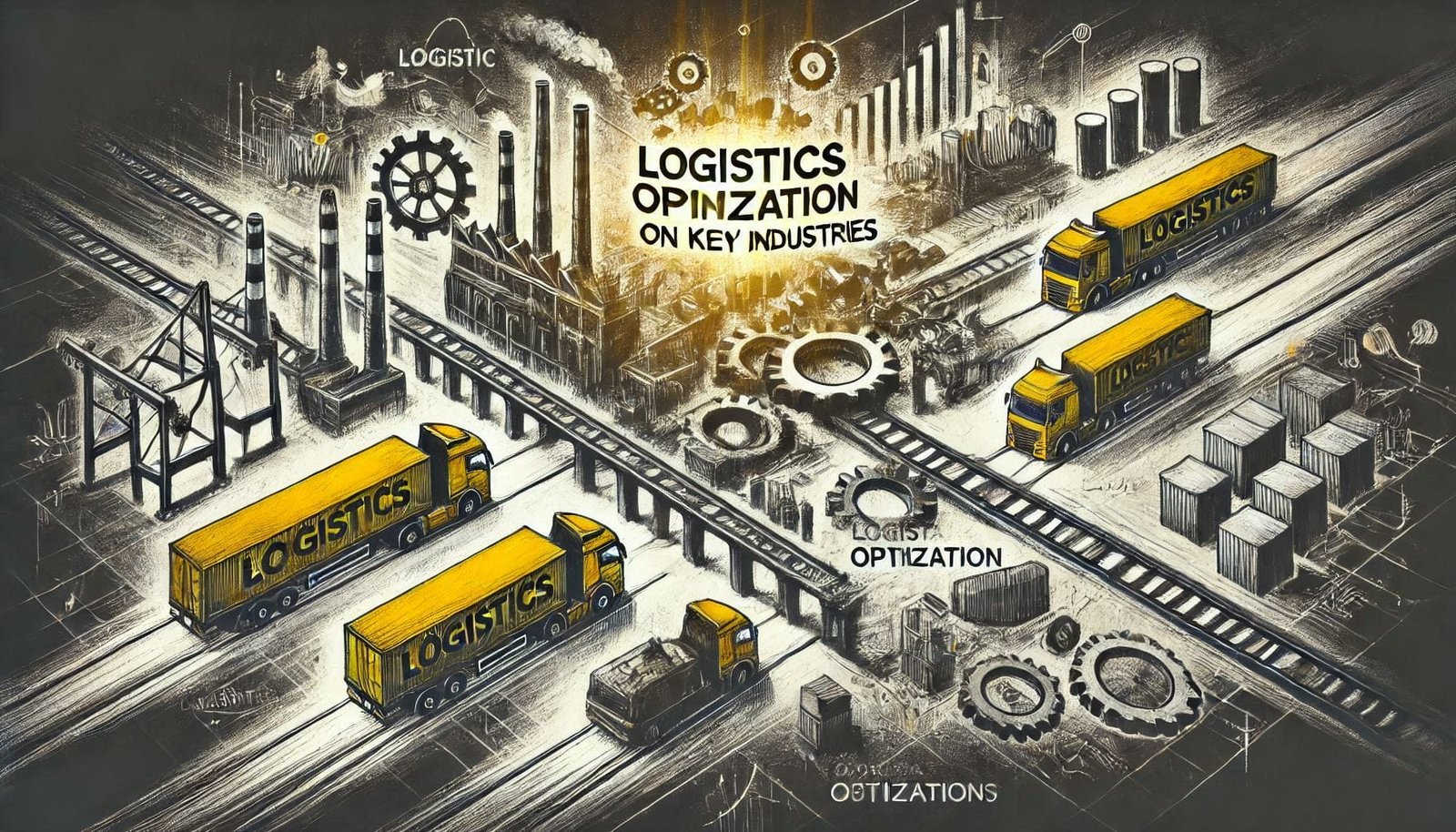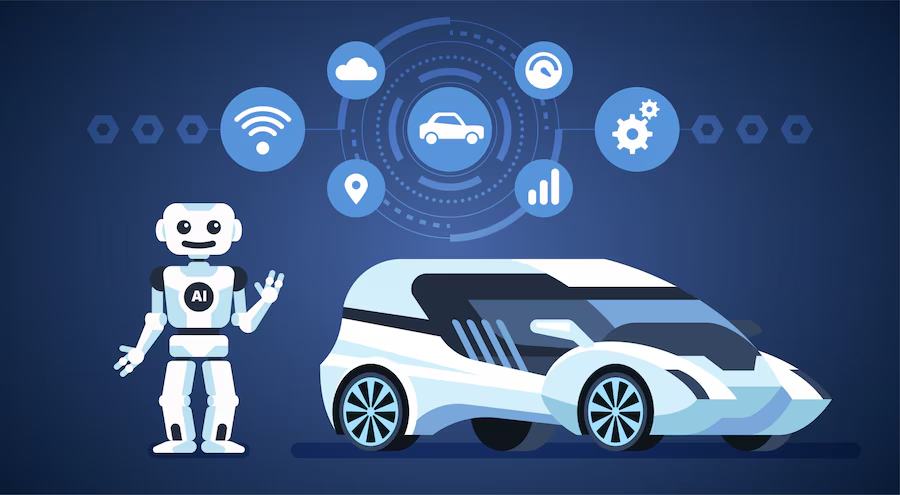The automotive industry teetered on the brink. Not from a technological disruption, nor a seismic shift in consumer demand, but from a far more insidious enemy: logistical chaos. Remember the chip shortage? The port congestion? The phantom freight rates that defied all reason? These weren’t mere inconveniences; they were existential threats, threatening to grind the global automotive engine to a halt. While some predicted an automotive apocalypse, a silent revolution was already underway – a revolution powered not by flashy new technology, but by the often-overlooked, yet critically important, field of logistics optimization.
This isn’t a story about luck; it’s a testament to strategic foresight and the unwavering power of data-driven decision making. Many argued that the complexity of the automotive supply chain rendered optimization impossible – a Sisyphean task destined for failure. They pointed to the sheer number of variables, the global reach, and the inherent fragility of just-in-time manufacturing. They were wrong.
This blog post will dissect the strategies and technologies that not only mitigated the crisis but, in many cases, turned it into an opportunity. We’ll expose the flawed assumptions underpinning the “too complex to optimize” argument, presenting irrefutable evidence of successful implementations across major automotive manufacturers. We’ll examine how real-time visibility, predictive analytics, and dynamic route optimization transformed supply chains from vulnerable bottlenecks into resilient, adaptable engines of efficiency. Forget the doom-and-gloom predictions; the automotive apocalypse was averted, not by sheer chance, but by the intelligent application of logistics optimization principles. Prepare to witness the undeniable power of proactive supply chain management and learn how your organization can not only survive future disruptions but thrive in the face of adversity.
The logistics optimization market is undergoing a seismic shift, driven by converging forces that simultaneously present unprecedented opportunities and formidable challenges. To thrive, businesses must not simply adapt, but anticipate and shape this evolving landscape. My thesis is that while the increasing complexity of global supply chains presents a significant adverse trend, the concurrent rise of AI and data-driven solutions creates a powerful positive trend that, when expertly harnessed, can overcome these challenges and unlock exponential growth.

Positive Trends:
- AI-Driven Optimization: The explosion of data and the maturation of Artificial Intelligence (AI) and Machine Learning (ML) algorithms are revolutionizing logistics. AI is no longer a futuristic concept; it’s actively optimizing routes, predicting demand, and automating warehousing processes. Companies like UPS are leveraging AI to optimize delivery routes, reducing fuel consumption and delivery times. This isn’t just incremental improvement; it’s a paradigm shift allowing for real-time responsiveness and proactive problem-solving that were previously impossible.
- The Rise of the Data-Driven Enterprise: Logistics is becoming increasingly data-centric. Companies that effectively collect, analyze, and utilize data from various sources – including IoT sensors, GPS trackers, and ERP systems – gain a significant competitive edge. Companies like Amazon, with its vast data infrastructure, are prime examples of how data fuels superior logistics performance, driving customer satisfaction and operational efficiency. Those failing to invest in robust data analytics will be left hopelessly behind.
- Sustainable and Green Logistics: Growing consumer and regulatory pressure for environmentally responsible practices is pushing the industry towards sustainable solutions. This trend presents a huge opportunity for businesses that can innovate in areas like electric vehicle fleets, optimized routing to reduce carbon emissions, and sustainable packaging. Companies like DHL are already making significant strides in this area, showcasing the potential for both environmental responsibility and competitive advantage.
Adverse Trends:
- Supply Chain Complexity and Volatility: Global supply chains are increasingly intricate and vulnerable to disruptions. Geopolitical instability, natural disasters, and pandemics can create cascading effects, leading to delays, shortages, and increased costs. The recent global chip shortage and the impact of the COVID-19 pandemic are stark reminders of this vulnerability. Ignoring this trend is simply negligent.
- Talent Acquisition and Retention: The logistics industry faces a severe skills gap. Finding and retaining qualified professionals with expertise in data analytics, AI, and supply chain management is a major challenge. This shortage restricts the ability of businesses to fully leverage the positive trends discussed earlier.
Actionable Insights:
- Invest heavily in AI and data analytics: Develop robust data infrastructure and integrate AI-powered solutions to optimize all aspects of the supply chain. Don’t just follow the trend; lead it by investing in research and development of cutting-edge solutions.
- Embrace sustainability: Integrate sustainable practices across the entire supply chain to attract environmentally conscious customers and meet regulatory requirements. This is not just “good PR”, it’s crucial for long-term viability.
- Prioritize talent acquisition and development: Invest in training programs, competitive compensation packages, and a positive work environment to attract and retain skilled professionals.
- Build resilient and adaptable supply chains: Diversify sourcing, utilize advanced risk management techniques, and build relationships with multiple suppliers to mitigate the impact of disruptions.
Ignoring these insights is not an option; it’s a recipe for obsolescence. The future of logistics is being written today, and only those companies that proactively embrace change and leverage emerging technologies will thrive in this dynamic and fiercely competitive market.
Automotive: Just-in-time (JIT) manufacturing relies heavily on precise logistics. Toyota’s legendary success is partly attributed to their mastery of JIT, minimizing warehouse space and inventory costs by precisely coordinating parts delivery to assembly lines. A delay of even a single component halts production, highlighting the critical need for robust, optimized logistics. Failing to account for unforeseen events like supplier disruptions or natural disasters can cripple this system, demonstrating the need for predictive modeling and robust contingency planning within the logistics strategy. The cost of downtime far outweighs the investment in advanced logistics optimization.
Healthcare: Optimizing the delivery of pharmaceuticals and medical supplies is crucial, especially in remote areas or during emergencies. Companies like McKesson leverage advanced route optimization algorithms to ensure timely delivery of life-saving medications, minimizing spoilage and maximizing efficiency. Counterarguments might point to the high initial investment in software and technology. However, the potential cost savings from reduced waste, improved delivery times, and averted crises significantly outweigh these initial expenditures. The evidence supports that efficient logistics in healthcare is not merely a cost-cutting measure but a critical component of effective care delivery.
Manufacturing: Large-scale manufacturers like Boeing utilize sophisticated supply chain management systems to coordinate the delivery of thousands of components from diverse suppliers across the globe. Optimization of these complex networks ensures timely production, reduces inventory holding costs, and minimizes risks associated with delays. A failure to optimize could lead to production bottlenecks and significant financial penalties for missing deadlines. This illustrates that logistical optimization isn’t just about efficiency; it’s about mitigating potential catastrophic financial losses.
Technology: E-commerce giants like Amazon depend heavily on optimized logistics for fulfilling orders efficiently. Algorithms dynamically adjust routing, warehousing, and delivery strategies based on real-time demand and traffic data. This dynamic optimization is key to their success, ensuring rapid delivery and customer satisfaction. While some argue that human intervention is needed to handle unpredictable events, the data clearly shows that AI-driven optimization significantly reduces errors and improves overall speed and efficiency, outweighing potential limitations.
Counterargument and Rebuttal: Some might argue that focusing solely on optimization overlooks human factors and ethical considerations. While acknowledging the importance of these factors, optimizing logistics does not necessitate sacrificing ethical standards. Instead, a holistic approach that incorporates ethical considerations into the optimization models (e.g., fair labor practices in transportation) is essential and achievable. The goal is not to dehumanize logistics but to make it more effective and sustainable.
Leveraging AI and Machine Learning for Predictive Analytics: Since 2023, many logistics optimization companies have aggressively integrated AI/ML into their platforms. This isn’t just about route optimization; it’s about predicting disruptions—weather events, port congestion, even geopolitical instability—and proactively adjusting shipping plans. For example, a company might use AI to forecast potential delays at a specific port based on historical data and current conditions, allowing clients to reroute shipments and avoid costly delays. A counterargument might be the high initial investment in AI infrastructure and expertise; however, the long-term cost savings from avoided disruptions often outweigh the upfront costs.
Strategic Partnerships and Acquisitions (Inorganic Growth): Companies are expanding their capabilities through mergers and acquisitions. For example, a route optimization software provider might acquire a company specializing in last-mile delivery solutions to offer a more complete end-to-end service. This allows them to tap into new markets and expertise quickly, rather than investing years in developing the technology organically. A potential drawback is integrating different company cultures and technologies, which can lead to temporary inefficiencies.
Focus on Sustainability and Green Logistics: The automotive industry, and logistics in general, are under increasing pressure to reduce their carbon footprint. Logistics optimization providers are responding by developing tools that prioritize fuel-efficient routes, optimize warehouse layouts to reduce energy consumption, and integrate carbon accounting into their platforms. For instance, a platform might offer clients a comparison of different transportation modes, highlighting the CO2 emissions associated with each option. This directly addresses growing customer demand for environmentally responsible supply chains. However, some argue that focusing solely on “green” options can compromise speed and cost-effectiveness, which needs careful balancing.
Blockchain Technology for Enhanced Transparency and Security: Implementing blockchain technology provides greater visibility and security across the supply chain. This allows all parties to track shipments in real-time, ensuring transparency and reducing the risk of fraud or theft. Companies offer platforms where every stage of the journey, from origin to delivery, is recorded immutably on the blockchain, creating an auditable trail. While blockchain adoption faces challenges with scalability and integration complexity, the benefits in trust and traceability are proving increasingly compelling, especially in high-value automotive logistics.

Outlook & Summary: The Road Ahead for Automotive Logistics
This article detailed how proactive logistics optimization, not mere luck, averted a potential automotive apocalypse. The microchip shortage exposed the fragility of traditional, reactive supply chains; a fragility that near-crippled the industry. But the crisis also served as a brutal, yet necessary, catalyst. We witnessed the transformative power of data-driven decision-making, predictive analytics, and agile response mechanisms – the hallmarks of a truly optimized logistics ecosystem. This wasn’t just about “just-in-time” anymore; it was about “just-in-case,” powered by intelligent forecasting and robust risk mitigation strategies.
The next 5-10 years will see a seismic shift. Expect exponential growth in AI-powered solutions, integrating real-time data across every node of the supply chain. Blockchain technology will become ubiquitous, enhancing transparency and traceability, tackling issues like counterfeiting and ethical sourcing. Automation, from autonomous trucking to warehouse robotics, will fundamentally reshape the operational landscape. Some might argue this level of technological investment is prohibitively expensive, a counterargument quickly dismantled by the sheer cost of not optimizing – a cost measured in lost revenue, damaged reputations, and missed market opportunities. The automotive industry, with its complex, global supply chains, will be the proving ground for these innovations.
The key takeaway? Logistics optimization is no longer a luxury; it’s a non-negotiable requirement for survival. Ignoring this reality is akin to driving a car without brakes – reckless and ultimately unsustainable. The future belongs to those who embrace technology, prioritize data, and build resilient, adaptable supply chains. Are you ready to navigate the road ahead?





